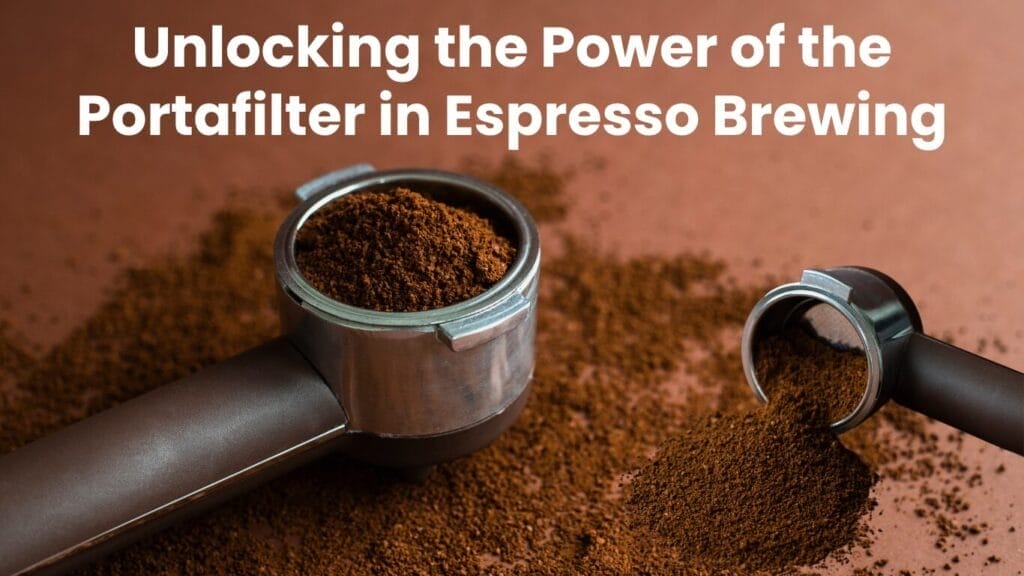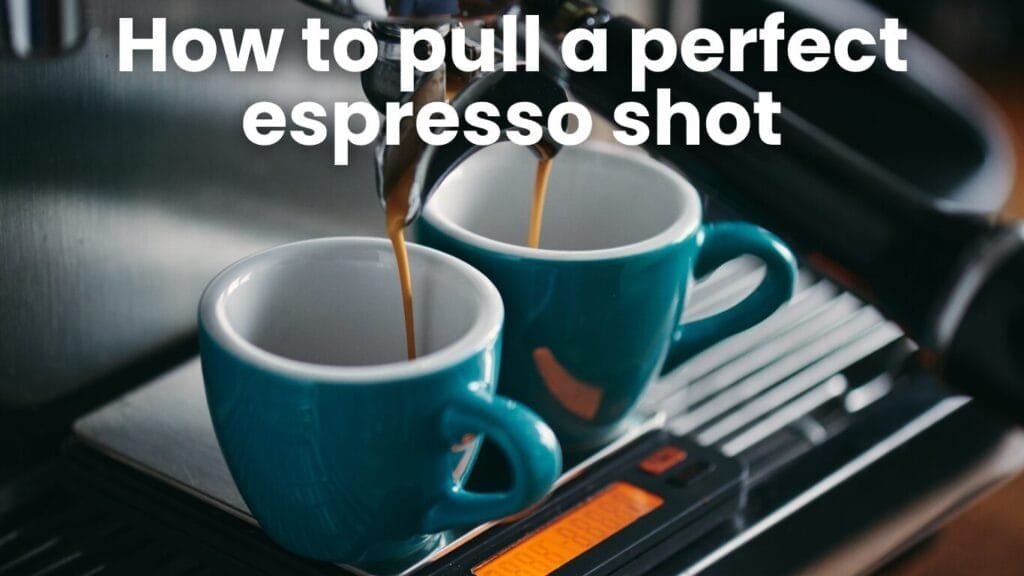Ever wondered what Is a 1-Bar 15-Bar Espresso Machine really means? You’re not alone. If you’re serious about espresso, understanding these pressure ratings is crucial to crafting rich, café-quality shots right at home.
Why would a 15-bar espresso machine only deliver 1 bar of pressure during brewing? It’s not just a tech spec—it’s the secret behind that perfect crema, bold flavor, and smooth extraction.
In this guide, we break down espresso pressure like a barista, explain what those numbers mean, and help you choose the right machine for your coffee game.
Table of Contents
What Is a 1-Bar 15-Bar Espresso Machine—and Does Pressure Really Matter?

If you’re exploring espresso machines online or checking specs before buying, chances are you’ve come across terms like 1-bar, 9-bar, or 15-bar pressure ratings. But What Is a 1-bar 15-bar Espresso Machine, and more importantly, does it impact how your espresso tastes?
The short answer: yes, it absolutely matters—but probably not the way you think.
Selecting a coffee maker that suits your coffee preferences is made easier when you are aware of bar pressure. Many manufacturers highlight 15-bar pressure in their specs as a selling point, but the real science of espresso brewing goes a bit deeper.
Let’s Break It Down: What Is Bar Pressure?
“Bar” is simply a unit of pressure. One bar is equal to the atmospheric pressure at sea level—the amount of pressure we feel around us in everyday life. But brewing espresso isn’t everyday—it’s an intense, pressurized process designed to extract rich flavors, aromas, and that iconic crema in just 25–30 seconds.
To achieve that, espresso machines use either steam pressure or pump-driven pressure to force hot water through finely ground coffee.
- Low pressure (around 1 bar) is found in basic, steam-driven machines. It’s often not enough to create a true espresso shot.
- Higher pressure (typically up to 15 bars) is used in pump-driven espresso machines, which can better replicate the performance of commercial-grade machines.
What Does “15-Bar” Actually Mean?
An espresso machine rated at 15 bars uses high pressure—15 times atmospheric—to extract rich, full-bodied espresso. However, this doesn’t mean your espresso is being brewed at 15 bars of pressure the entire time.
In reality, most modern machines with a 15-bar pump are designed to start at higher pressure for priming, then drop to a consistent 9 bars during extraction, which is the industry standard for great espresso. Think of it as a turbo boost during startup, but a steady cruise during the actual brew.
So why advertise 15 bars? Simple: marketing. It sounds more powerful. In actuality, however, internal pressure stability and regulation are significantly more important than peak pressure.
So, What About 1-Bar Machines?
Now, let’s talk about the low end of the scale.
A 1-bar espresso machine operates at the same pressure as our surrounding atmosphere. These machines are usually steam-driven, where steam builds in a boiler and pushes water through the grounds.
But here’s the problem: 1 bar of pressure isn’t enough to extract a true espresso shot. You’ll get something closer to strong drip coffee—thin, watery, and lacking crema. The flavors will be muted, and the overall cup will fall flat compared to what you’d expect from a café-quality espresso.
These machines may be affordable, but they’re best suited for beginners or casual coffee drinkers, not espresso purists.
Does Pressure Really Matter?
Absolutely—but it’s not just about the maximum number on the box. What matters most is how well the machine maintains consistent pressure during the extraction process.
Let’s compare:
- Too low pressure (<6 bars): Water flows too slowly or too weakly through the coffee puck, leading to under-extracted espresso—thin, sour, and lacking complexity.
- Optimal pressure (8–10 bars): This range delivers the best results—balanced flavor, rich crema, and smooth body. Most quality machines aim to stay in this zone.
- When espresso machines go above 20 bars of pressure, they often cause over-extraction, leading to overly bitter and unbalanced espresso shots. The espresso becomes sharp, astringent, or muddy.
Many budget-friendly 15-bar machines are built cheaply, and their internal components fail to regulate pressure properly. That’s why a solid 9-bar machine from a trusted brand can outperform a 15-bar option that lacks stability and design precision.
1-Bar vs 15-Bar Espresso Machines: What’s the Real Difference in Your Cup?

When shopping for an espresso machine, it’s easy to get caught up in the numbers. Many machines boast pressure specs like 15 bars, while some budget-friendly models operate at just 1 bar. But what do these numbers mean? And more importantly, how does a 1-bar vs 15-bar espresso machine affect the final result in your cup?
Let’s dive into the practical, flavor-filled differences you’ll taste.
1-Bar Machines: Steam-Driven and Severely Limited
A 1-bar espresso machine typically uses steam pressure to move water through your coffee grounds. Steam-driven machines were among the first types available to home brewers and are still found in many budget models today. But here’s the catch:
- Atmospheric pressure, the standard for measuring espresso pressure, is equal to 1 bar at sea level.
- Espresso, by definition, requires much more force—at least 9 bars of pressure—to extract correctly.
Espresso machines operating at 1 bar struggle to produce the pressure required for rich, crema-topped espresso shots.
- Penetrate the coffee puck evenly
- Extract essential oils and complex flavors
- Build the pressure needed for that golden crema on top
The result? You get weak, watery coffee that may resemble espresso in color, but falls short in strength, aroma, and texture. It lacks the richness and velvety mouthfeel that defines a true espresso shot.
Steam machines also tend to lack temperature precision, which further undermines the flavor of the shot. They can be a stepping stone for beginners, but if you’re serious about espresso, you’ll quickly hit the ceiling with a 1-bar setup.
15-Bar Machines: Pump Power That Makes a Difference
Now, let’s talk about 15-bar espresso machines—by far the most common rating you’ll see in today’s home espresso market. These machines use electric pumps, like vibratory or rotary pumps, to build up to 15 bars of pressure. But don’t be fooled—that’s the max capability, not the actual brewing pressure.
Most machines with 15-bar systems are designed to:
- Prime the system at high pressure
- Then brew at a stable 9 bars, which is considered the industry gold standard
- Maintain consistent water flow and temperature throughout extraction
What does this mean for your cup?
- Balanced flavor: The 9-bar sweet spot extracts just the right amount of bitterness, sweetness, and acidity.
- Rich crema: With the right grind and tamp, you’ll get that luxurious layer of golden crema on top.
- Full-bodied mouthfeel: Espresso made at proper pressure tastes richer, thicker, and more satisfying.
Additionally, 15-bar machines often come with better components—such as PID temperature controllers, pre-infusion modes, and pressurized filter baskets—designed to help you fine-tune your shot like a pro.
Key Differences at a Glance
| Feature | 1-Bar Espresso Machine | 15-Bar Espresso Machine |
| Pressure Type | Steam-driven | Pump-driven |
| Brewing Pressure | ~1 bar (atmospheric) | Typically brews at ~9 bars |
| Espresso Quality | Weak, watery, no crema | Rich, bold, balanced with crema |
| Crema Production | Very little or none | Genuine espresso shots are possible |
| Flavor Complexity | Flat and under-extracted | Full flavor spectrum unlocked |
| Ideal For | Beginners, casual coffee drinkers | Home baristas, espresso lovers, daily drinkers |
| Espresso Authenticity | Not true espresso | Genuine espresso shots possible |
So, What’s the Real Difference in Your Cup?
The difference between a 1-bar vs 15-bar espresso machine is night and day. One struggles to meet the basic definition of espresso, while the other provides the pressure required to unlock the full potential of your coffee beans.
If you’re serious about taste, crema, and crafting consistent, high-quality espresso shots at home, a 15-bar machine—especially one that regulates pressure well—is a must-have.
But don’t just chase the number. Look for:
- Consistent 9-bar brewing capability
- Quality build (boiler type, pump system, group head)
- Temperature control and pre-infusion features
Because when it comes to espresso, balanced pressure equals balanced flavor. And that’s the real difference you’ll taste in every sip.
FAQs||What is a 1-bar 15-bar espresso machine
What does “bar pressure” mean in an espresso machine?
Bar pressure refers to the force used to push hot water through coffee grounds. One bar equals atmospheric pressure; espresso typically requires around 9 bars for proper extraction.
What is a 1-bar espresso machine?
A 1-bar espresso machine uses low steam pressure, usually found in entry-level models. It lacks the power to brew true espresso and produces weak, crema-less coffee.
What is a 15-bar espresso machine?
A 15-bar espresso machine uses a pump to build pressure, often brewing at a stable 9 bars. This helps create strong, flavorful espresso with rich crema.
Is 15-bar pressure better than 1-bar?
Yes, 15-bar pressure is significantly better. It provides the force needed to extract rich flavors and crema, unlike 1-bar machines, which can’t make real espresso.
Do more bars mean better espresso?
Not always. More bars sound impressive, but consistent 9-bar brewing is ideal. Machines with 15 bars often brew at 9 bars but offer better pump priming and pressure control.
bottom line
When it comes to espresso machines, more bars don’t always mean better coffee. A 1-bar machine lacks the pressure to brew true espresso, while a 15-bar machine—if built well—can deliver café-quality shots by maintaining optimal 9-bar brewing pressure.
The key isn’t just the max number, but how consistently and precisely pressure is applied during extraction. For the best espresso taste, focus on machines that ensure stable brewing pressure throughout the shot.
For rich flavor, thick crema, and a real espresso experience, go for a machine that brews at a stable 9 bars, backed by reliable 15-bar pump power.







